Courses

PD COURSE
Old Age Makeup Tutorial
by Matt Webster
Instructor Matt Webster guides this tutorial on Old Age Makeup. Old age is the number one special effect makeup you will do and it’s a great process to teach in your class.
This video series takes you visually step by step through everything you need to know about creating old age makeup, from the subtle to the extreme. You can view each step individually so they can be practiced one at a time in the classroom.
The first part is the temple and the forehead. The second part are the cheeks and the jaw. Third will be lips, chin, and nose. Fourth is a section on the face called the nasolabial fold. Fifth, the eyes. And the sixth section will be looking at wrinkles, stippling and finishing the makeup look. These sections are designed to be seen one at a time and to teach within a 90-minute class between instruction, setup, practice, and cleanup. When you put them all together, you will have the parts and pieces to make a full old age makeup.
Read More
about Old Age Makeup Tutorial
Read Less
about Old Age Makeup Tutorial
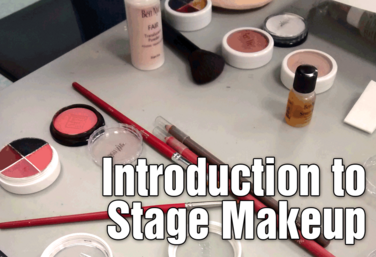
PD COURSE
Introduction to Stage Makeup
by Matt Webster
This introductory course in Stage Makeup is brought to you by Matt Webster, and covers all the basics. You’ll learn the tools you can use to build a makeup kit, how to match skin tone, what are the shapes of the face and how those shapes affect everything you do with makeup.
You’ll learn about highlight and shadow, blending, basic corrective makeup, safety and hygiene, and lastly, tips for teaching makeup. And throughout, sample exercises are included so you have the information you need to bring stage makeup into the drama classroom.
Read More
about Introduction to Stage Makeup
Read Less
about Introduction to Stage Makeup

PD COURSE
Making Blood and Gore Tutorial
by Linda Veneris
This tutorial, led by Linda Veneris, shows teachers and students how to make blood and gore with easy to find, everyday ingredients.
Included are recipes, video demonstrations, and top 10 tips for working with students on blood and gore. This tutorial can be part of a stage makeup unit in your classroom as well as for productions.
Read More
about Making Blood and Gore Tutorial
Read Less
about Making Blood and Gore Tutorial
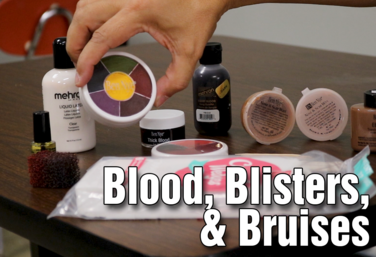
PD COURSE
Blood, Blisters & Bruises
by Matt Webster
Welcome to Blood, Blisters, and Bruises. This is an introductory course to learn how to use makeup to create scars, blisters, and bruises with a little blood on the side, and a special bonus section on creating zombies. You’re going to learn the techniques and materials you will need to do these special effects, and how to teach your students to do these special effects.
Read More
about Blood, Blisters & Bruises
Read Less
about Blood, Blisters & Bruises
Units
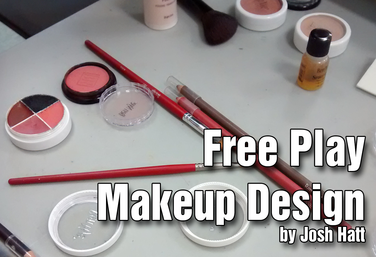
UNIT
Free Play Makeup
by Josh Hatt
This is a student centred mini-unit on makeup design. Makeup is useful in transporting an audience to a different world.
The purpose is for students to understand that makeup is a tool that theatre technicians can use in order to contribute to effective performance aesthetics; to understand basic makeup rules and care instruction; to understand how to complete a makeup design plot; to look at a project and figure out for themselves what they need to succeed.
Read More
about Free Play Makeup
Read Less
about Free Play Makeup
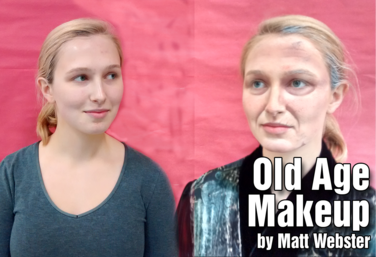
UNIT
Old Age Makeup
by Matt Webster
In this unit, students will learn the terminology, technology, and application of old age makeup. It is designed to lead students through a hands-on exploration of the techniques used to create an old age effect with makeup. By breaking the entirety of the human face down into different, distinct areas, students will be able to concentrate on smaller, more focused lessons, building up to a complete old age makeup design.
Read More
about Old Age Makeup
Read Less
about Old Age Makeup
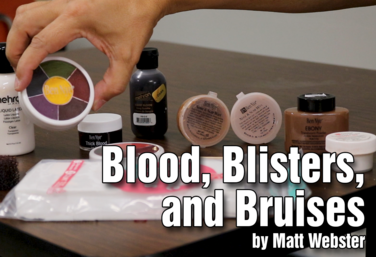
UNIT
Blood, Blisters & Bruises Makeup
by Matt Webster
The most common special-effects makeup technique used with student performers is wounds such as cuts, bruises, and blisters. In order to create these wounds, students must understand what physically happens to the human body when a wound is suffered and then successfully recreate that wound with specialized makeup.
This unit will provide students with information they will need to successfully design and execute specific wound makeup techniques for the stage.
This unit is designed to lead students through a hands-on exploration of the techniques used to create a wound effect with makeup. By focusing on a variety of materials and techniques, students will learn the process of creating simple special-effects wound makeup designs.
Read More
about Blood, Blisters & Bruises Makeup
Read Less
about Blood, Blisters & Bruises Makeup
Lesson Plans
LESSON PLAN
Zombification of an Existing Story
by Matt Webster
Students will analyze a story/script and create the circumstances that turned the characters of the story into zombies.
Read More
about Zombification of an Existing Story
Read Less
about Zombification of an Existing Story
Attachments
Resources

RESOURCE
Keith Rollins: Experience at FX University
Lindsay Price talks to Keith Rollins, one of the winners of the DTA Travel Scholarship in 2017, about his experience at FX University, a hands-on, professional training event covering prosthetics application, makeup effects, mask making, sculpture, mould making, airbrush and more. See some of Keith's work and hear what he learned in this interview.
Read More
about Keith Rollins: Experience at FX University
Read Less
about Keith Rollins: Experience at FX University

RESOURCE
Masterclass with Gregory Hewett: Makeup Artist
Masterclass is a series of one-on-one interviews with experts, creators and innovators in the world of Theatre that you can study in-depth, or share with your classes. Think of this series as 'Inside the Actor's Studio' for Drama Teachers.
In this masterclass, Matt Webster talks to Gregory Hewett, special effects makeup, Director of Makeup, New Day Pictures Inc.
Read More
about Masterclass with Gregory Hewett: Makeup Artist
Read Less
about Masterclass with Gregory Hewett: Makeup Artist
Attachments